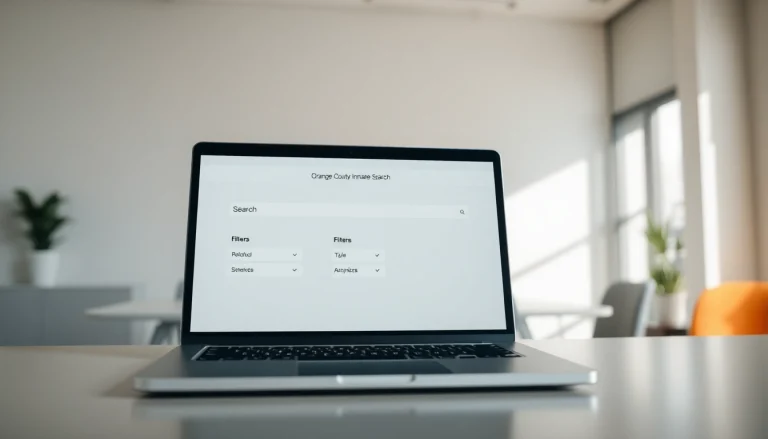Understanding Trademark Registration in India
Trademark registration is a critical aspect of protecting brand identity and intellectual property across the globe. For businesses operating in both India and the US, understanding the intricacies of trademark registration in India and US can be pivotal in safeguarding their interests. In India, trademark protection is governed by the Trade Marks Act of 1999 and the Trade Marks Rules of 2017, which provide a legal framework for registration, rights, and enforcement. This section delves into the essential legal framework surrounding trademark registration in India.
Legal Framework and Key Laws
The Trade Marks Act, 1999 serves as the cornerstone of trademark law in India. It outlines the parameters for registration and protection of trademarks, elucidating the rights granted to trademark holders. A trademark is defined under the Act as any mark capable of being represented graphically and capable of distinguishing the goods or services of one person from those of others. The Act recognizes not only traditional marks like logos and symbols but also includes non-traditional marks such as sound and smell.
In addition to the primary legislation, the Indian legal system also emphasizes the importance of common law rights, which can be claimed through use. This dual framework offers robust protection, allowing businesses to navigate both legal and practical aspects of trademark rights.
Application Process and Requirements
The trademark registration process in India comprises several stages:
- Trademark Search: Before applying, it’s advisable to conduct a trademark search to ensure that the desired mark isn’t already registered or pending registration.
- Preparation of Application: The application must be meticulously prepared, detailing the mark, the goods or services it covers, and the applicant’s details.
- Filings: Applications can be filed online with the Controller General of Patents, Designs & Trademarks. It typically requires supporting documents such as ID proof, address proof, and a power of attorney if needed.
- Examination: After filing, the application will be examined to ascertain compliance with legal norms and to check for existing trademarks that may conflict.
- Objections: If objections arise, the applicant is notified. They can respond to resolve concerns before proceeding.
- Opposition and Registration: The mark can be opposed by third parties during a designated period after publication in the Trademarks Journal. If unopposed or successfully defended, the mark gets registered.
Standard registration takes about 18 to 24 months, depending on the complexity of the application and any potential opposition issues encountered.
Common Challenges for Applicants
While the registration process may seem straightforward, various challenges can hinder applicants:
- Complex Trademark Classifications: Understanding the classifications for different goods and services can be daunting, often leading to errors in applications.
- Provisional Refusals: If the trademark examiner raises an objection, timely and effective responses are critical to avoid delays.
- Opposition Proceedings: Facing opposition from third parties can add layers of complexity, necessitating legal expertise to navigate disputes.
The Trademark Registration Process in the US
The US approach to trademark registration is also systemic but follows a different set of statutory regulations and procedural requirements. Governed by the Lanham Act, trademark registration in the United States is managed by the United States Patent and Trademark Office (USPTO). Understanding the procedural nuances is essential for both domestic and foreign applicants seeking trademark protection.
Step-by-Step Filing Procedure
The trademark registration process in the US is comprised of several distinct steps:
- Trademark Search: As in India, conducting a trademark search is crucial to determine whether the mark is already in use or registered.
- Filing an Application: Applications can be submitted online through the USPTO’s Trademark Electronic Application System (TEAS). Applicants need to provide details about the mark, its intended use, and the goods and services it will represent.
- Examination: After submission, the application undergoes examination by a USPTO examining attorney to ensure compliance with federal trademark law.
- Publication: If the application passes examination, it will be published in the Official Gazette, allowing third parties the opportunity to oppose the registration.
- Registration: If no oppositions are filed or if the opposition is unsuccessful, the trademark is registered, and the applicant receives a certificate of registration.
Fees and Timeline for Registration
The cost associated with trademark registration in the United States varies based on the filing method and number of classes of goods/services. The standard fees range from $250 to $350 per class under TEAS. The entire process can typically take between 8 and 12 months, subjecting to any oppositions that may arise.
Maintaining Trademark Rights Over Time
Once registered, trademarks must be actively maintained. In the US, trademark holders are required to file specific maintenance documents and fees at intervals of 5 to 6 years and every 10 years thereafter, ensuring that the mark remains active and protected. Failure to comply can lead to cancellation of the trademark.
Comparative Analysis of Trademark Laws
While both India and the US provide for thorough protection of trademarks, several fundamental differences exist in their legal frameworks, compliance requirements, and procedural efficiencies.
Key Differences Between India and the US
One of the notable discrepancies lies in the approach to intent-to-use applications. The US system allows applicants to file on an intent-to-use basis, essentially reserving a mark before it is in actual use, whereas India does not have this provision; actual use is required before registration. Additionally, the duration for opposition proceedings varies greatly, with the US offering a much longer window for third-party opposition compared to India.
Common Legal Misconceptions
There are prevalent misconceptions that can mislead applicants. One such misconception is the belief that federal registration in the US automatically protects trademarks worldwide. This is false; trademark protection is territorial, meaning registration in one country does not equate to protection in another.
Cross-Border Registration Considerations
Businesses operating across borders must understand the nuances involved in registration. For companies based in the US looking to expand their reach into India, registering a trademark in India often necessitates the completion of specific requirements, including local representation and adherence to Indian laws.
Practical Steps for Foreign Applicants
For foreign businesses seeking trademark protection in India, navigating the registration process can be complex but manageable with the right approach.
How to Register a Trademark in India from the US
Foreign applicants must take several steps to effectively register a trademark in India:
- Engaging Local Professionals: It’s advisable to work with local legal experts familiar with Indian trademark law to facilitate a smoother process.
- Documentation Preparation: Ensure all necessary documents, including proof of use and identity, comply with Indian requirements.
- Online Filing: Use the Indian Trade Marks Registry’s online portal for application submission, ensuring all details are accurate to avoid rejections or delays.
Utilizing the Madrid Protocol for Global Protection
The Madrid Protocol allows trademark owners to apply for protection in multiple countries through one application, making it a viable option for US businesses aiming to secure their trademarks in India and other nations. This international treaty simplifies the registration process and reduces associated costs.
Expert Tips for Successful Registration
To enhance the likelihood of successful trademark registration:
- Conduct Thorough Searches: Always perform comprehensive searches of existing trademarks to avoid potential conflicts.
- File on Time: Be mindful of all timelines for renewals and compliance to maintain trademark rights.
- Monitor Registrations: Keep track of your trademarks and potential infringements actively using monitoring services.
Future Trends in Trademark Registration
The landscape of trademark registration is evolving rapidly due to technological advancements and shifting market dynamics.
Emerging Technologies Impacting Trademark Law
Technologies such as artificial intelligence (AI) and blockchain are beginning to influence how trademarks are registered, protected, and monitored. AI can assist with trademark searching and analyzing existing registrations, improving efficiency. Blockchain technology can potentially offer immutable records for trademark ownership, enhancing protection against infringement.
Best Practices for International Brands
For international brands, adopting best practices in trademark management is vital. This includes consistent international strategies for enforcement and monitoring, use of local counsel in foreign jurisdictions, and aligned branding that respects local laws and culture.
The Importance of Trademark Monitoring
Continuous monitoring is crucial as it helps identify potential violations and counterfeiting, protecting brand integrity. Established companies should invest in monitoring services or develop in-house capabilities to safeguard their trademarks globally.







